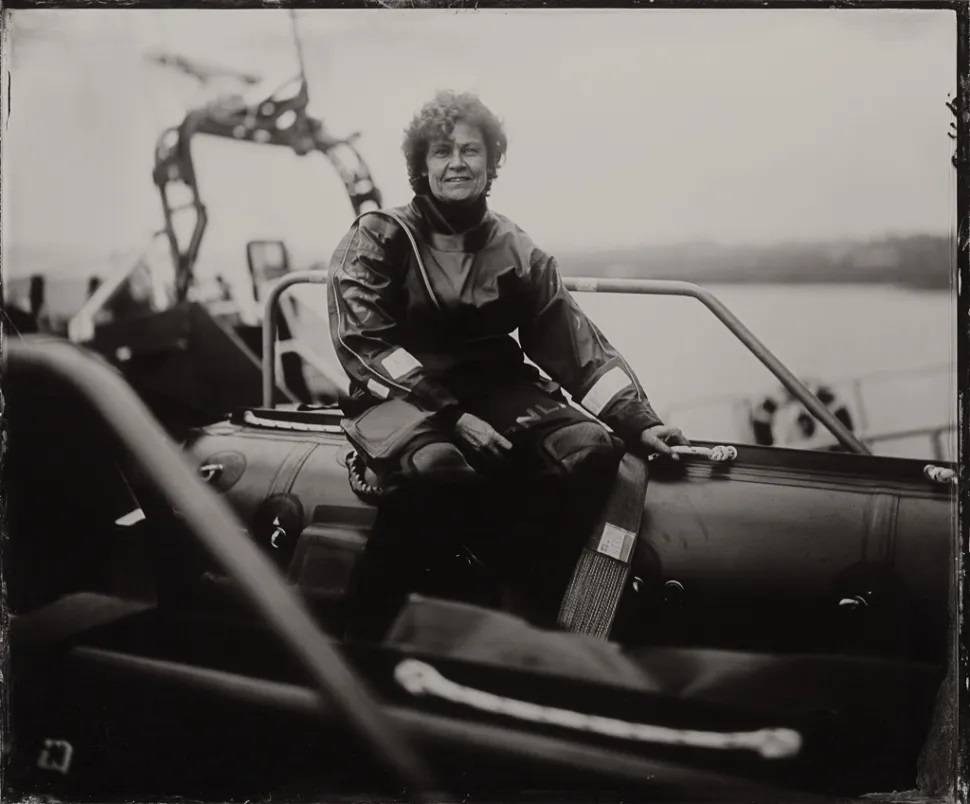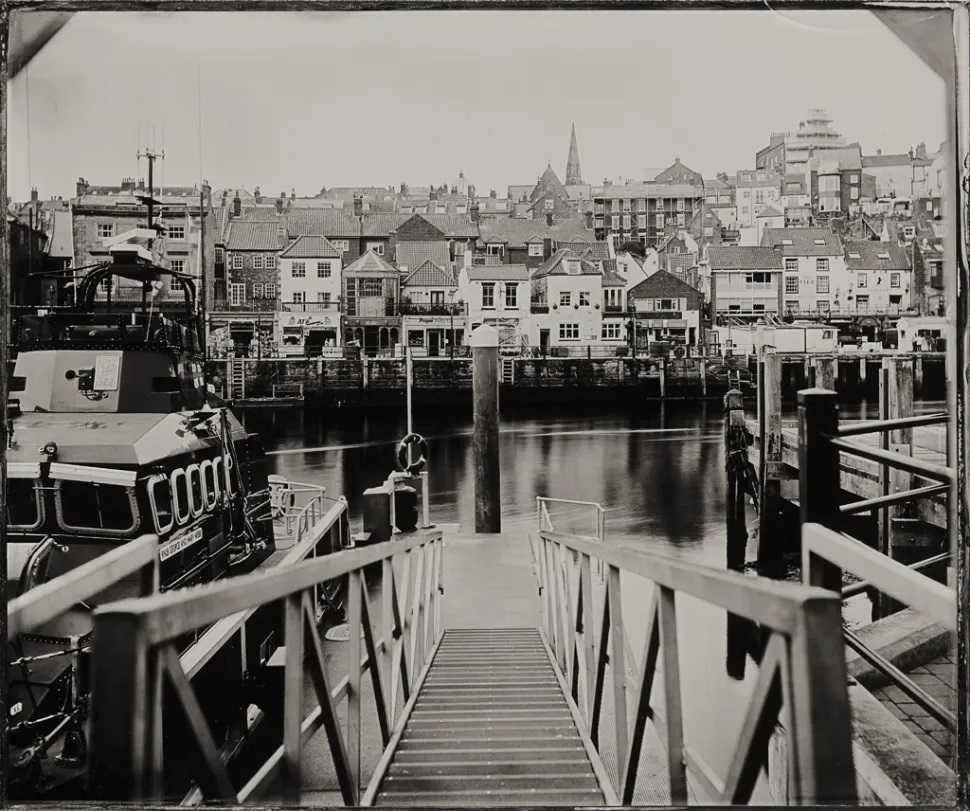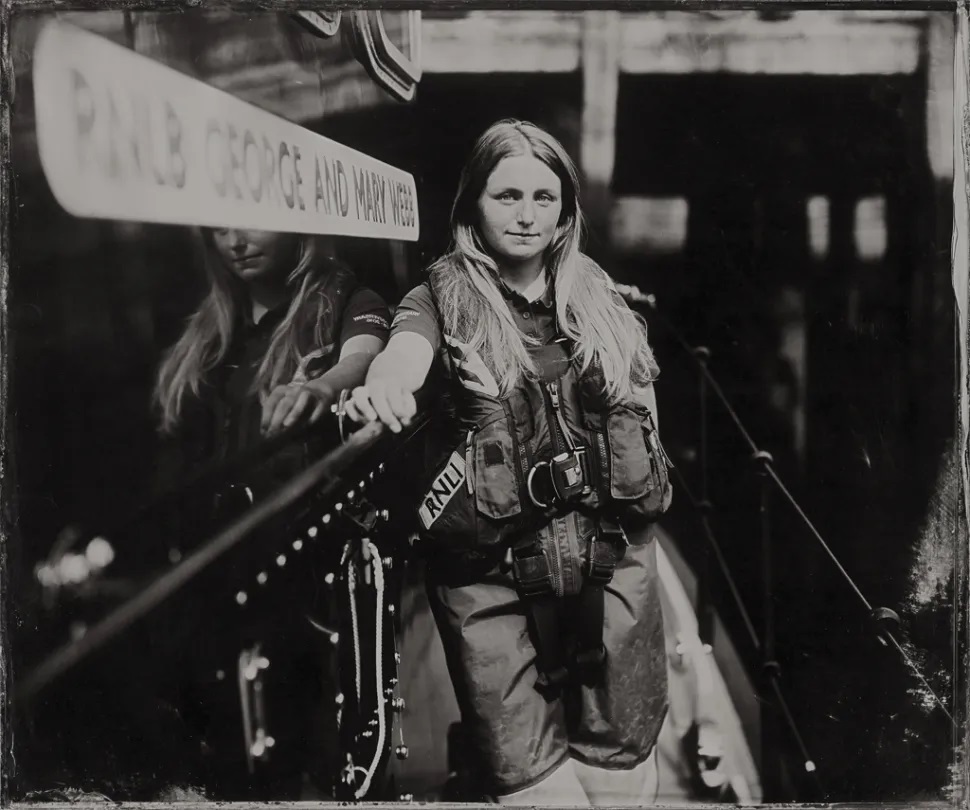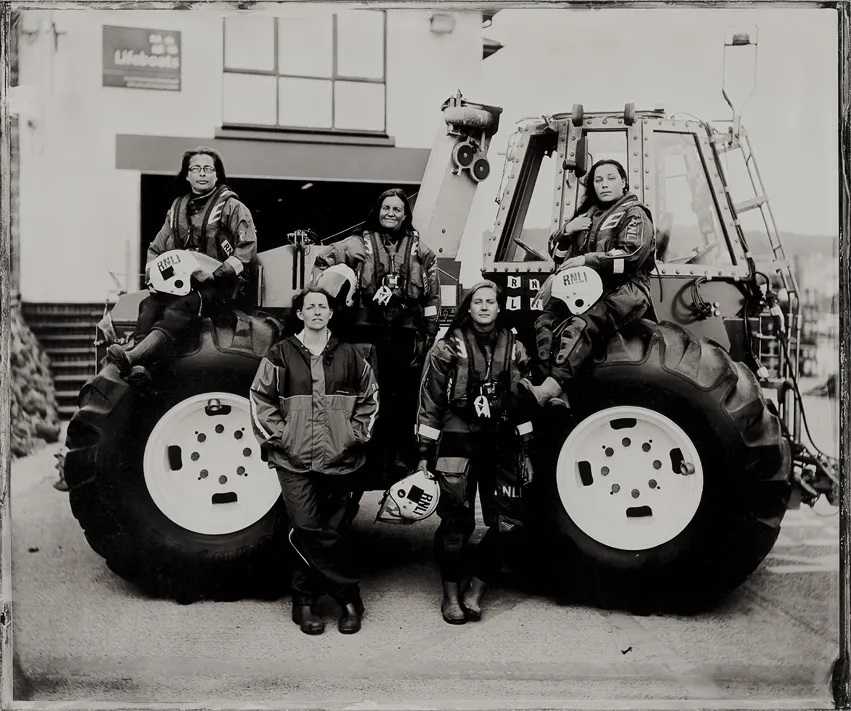Women Of The RNLI – National Maritime Museum, London
Art, history, and women’s stories intersect in Women of the RNLI at the National Maritime Museum, marking the charity’s 200th anniversary.

Lead image: Women of Aberystwyth RNLI lifeboat station, 24th September 2016. Photograph by Jack Lowe.
200 Years of the RNLI
This year, the Royal National Lifeboat Institution (RNLI) turns 200. That’s 200 years of saving lives at sea. Think of the changes during that time: from wooden rowboats heading out into unknown situations to state-of-the-art equipment, clothing, monitoring and communications. The RNLI has always relied on public donations, and so this milestone is a great opportunity to raise awareness and help secure its future. But it’s also a chance to highlight some of the greatest changes over those two centuries, women’s contributions being one of them.
A common misconception, based partly on sentimental representations in paint and print, is that women in coastal communities were passive. Stoically kissing their menfolk goodbye as they headed out into dangerous waters, and worrying about them until they were safely back on land. That worry, and the dangers of life at sea, are of course very real and still part of coastal communities’ day to day. But one of the points that Women of the RNLI sets out to make is how central women’s varied contributions have been since the very start of the organisation.
To tell this story, the exhibition utilises different techniques. There is a lot of factual information broken up into themes: fundraising, the RNLI’s history, equipment, and so on. Written texts are supplemented with historic and contemporary objects, with interactive activities here and there. But each section is also beautifully illustrated using black and white photographs by Jack Lowe. More on Lowe and The Lifeboat Station Project shortly.

Women of the RNLI
So, what have those women been doing with and for the RNLI for 200 years? A lot, as it turns out. But the exhibition does not shy away from how many more roles are open to today’s women than their predecessors. A timeline near the start of the exhibition marks some of the key dates:
- 1838: Grace Darling is the first woman to be awarded an RNLI Bravery medal, for saving stranded survivors of the Forfarshire
- 1865: Margaret Armstrong is one of the first women to launch lifeboats
- 1904: Letitia French is the first woman to manage an RNLI lifeboat station
- 1969: Elizabeth Hostvedt is the first trained woman to join an RNLI lifeboat crew
The list goes on. But some of these dates are perhaps already surprising. That these women were pioneers shows that not all roles have been open to women throughout the RNLI’s history while, as Jack Lowe’s photographs demonstrate, there is now no task you can think of that women do not undertake. As well as the women breaking new ground, many other women have of course been part of the RNLI community. Fundraising, for instance, has long been a way for women to support initiatives while not pushing the bounds of the roles assigned them by society.
Some traditional roles may subvert your expectations, however. You may be more surprised for instance, despite reading about Margaret Armstrong above, to learn that there is a long tradition of women launching lifeboats. Take Dungeness. With its long pebbly beach, blocks of wood were traditionally used as the runners to help launch lifeboats. With many local men out earning a living fishing, those available were needed as lifeboat crew. And so the women plugged the gap, heaving the heavy wooden blocks out, and pulling them back up the beach once the boat came back in. You can watch it for yourself in a clip from a 1970 BBC Nationwide film. The work is as impressive as the statements from the lone man interviewed are unsurprising.

Where Art, History and Awareness-Raising Meet
A little background now on the beautiful photographs which are part of Women of the RNLI. And an interesting fact as part of that: the RNLI’s 238 stations are not just around the UK, but also the Republic of Ireland. The entirety of the British Isles. A large target, then, for Lowe to set himself. Starting in 2015, he has taken his converted ambulance/mobile darkroom around RNLI lifeboat stations. At each one, he uses collodion (wet plate) photography to photograph the crew, the view from the station, and the women working there. The project is ongoing.
So does this exhibition hang together, as it were? Beautiful photographs, a rich history, women’s stories: there’s a lot here. I feel it does work, if you come in with an open mind. It’s not just a photography exhibition, which is the first thing to understand. And it feels very much like an exhibition with a purpose: as an institution receiving very little government funding (less than 1%), the RNLI needs awareness and support to keep going. This exhibition is ultimately part of that campaign.
But now a little story to end with. When I was about halfway through my visit to Women of the RNLI, I heard a group of children coming in. I looked up, and noticed they were sea cadets. They got a briefing from their group leaders, and then had a look for themselves. And with many girls and young women amongst them, today’s women of the RNLI may have inspired the next generation. It was a nice reminder of the many purposes exhibitions like this serve: to educate, to inspire, to inform. This example is engaging, accessible, and left this reviewer in awe of the many capable, determined and dedicated women who have supported the RNLI over its 200 year history.
Salterton Arts Review’s rating: 4/5
Women of the RNLI on until 1 December 2024. More information here.
If you see this after your page is loaded completely, leafletJS files are missing.

